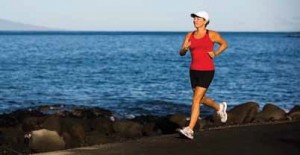 In Hampton Roads, our weather changes very quickly so it is never too early to think about exercise in the heat. The risk of heavy athletic activity in the hot summer sun should be a point of concern for student athletes, coaches, and parents. Heatstroke, which is often commonly called sunstroke, is a condition that is very dangerous and can occur when the body is unable to regulate its own temperature due to vigorous activity in the heat.
In Hampton Roads, our weather changes very quickly so it is never too early to think about exercise in the heat. The risk of heavy athletic activity in the hot summer sun should be a point of concern for student athletes, coaches, and parents. Heatstroke, which is often commonly called sunstroke, is a condition that is very dangerous and can occur when the body is unable to regulate its own temperature due to vigorous activity in the heat.
Your core temperature often rises above 104F and is accompanied by mental status changes (disorientation, confusion, memory loss, loss of orientation, loss of judgment). This situation can lead to serious physical complications, or even death. Teenage athletes are often very susceptible to heatstroke because of their competitive nature, and lack of knowledge about the dangers of working out in the sun.
What are the Warning Signs of Heatstroke?
One of the most dangerous aspects of heatstroke is that it can occur quickly. Once the body’s natural thermostat loses the ability to cool itself – which is done through perspiration – the athlete’s temperature can rise rapidly. This is why it is so important to for coaches and athletes to know and understand the symptoms of heatstroke.
Dizziness, headache, and fatigue are some of the early signs that the body is being pushed harder than it should. The sun can be harsh to athletes training for long hours outdoors and the onset of these symptoms should be a warning sign to take a break. Vomiting or fainting commonly occurs in people who ignored the early warning signs. Also, a lack of perspiration in an athlete who is complaining of a headache or dizziness should be taken seriously. Since the body’s way of cooling itself down is through sweating, an athlete with hot, dry skin, with little to no evidence of perspiration may be experiencing signs of heatstroke as well.
How Do Good Coaches Prevent Heatstroke?
A coach’s job is not only to prepare his athletes for competition, but also to teach them how to train safely. There are a number of things coaches can do to prevent exposing their athletes to the dangers of heatstroke.
One of the most important parts of any athletic training regimen is staying hydrated. By taking into account the hot summer temperatures and providing water breaks for their athletes in regular intervals, a coach can help his athletes steer clear of dehydration. Also, many coaches consider it good practice to avoid holding training sessions at times when the sun is at its peak. While these tips are generally just considered to be “good coaching,” one of the most effective ways a coach can help his players avoid heatstroke is to educate them on the symptoms and dangers, so that they can be aware of their bodies’ limits.
Michael R. Simpson, DO, specializes in family medicine and primary care sports medicine. Dr. Simpson is board certified in family medicine and sports medicine, and is a fellow of the American Academy of Family Physicians. He is a member of the American Osteopathic Association, American College of Sports Medicine and the American Medical Society of Sports Medicine. Prior to medical school, Dr. Simpson earned a master’s degree in exercise science from the University of South Carolina in Columbia, S.C.



